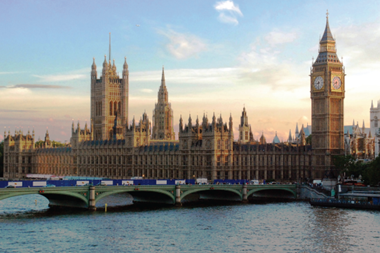UK - The Pension Protection Fund (PPF) has proposed changes to the assessment of insolvency risk for the 2011/2012 pension fund levy, which exclude registered charges caused by contingent assets when calculating failure scores.
The changes follow the recent revision of Dun & Bradstreet's (D&B) UK failure score methodology in light of the significant economic changes - including greater use of interim financial statements - as the PPF claimed its assessment of D&B's revisions was a "good time to revisit at a range of issues that have been raised with us by stakeholders".
These include the potential manipulation of D&B scores through change of location or reclassification of sector, the correlation between the number of board directors and failure rates, and the charges registered against the company by making a Type B contingent asset - property, cash or securities - available to the pension fund.
After discussions with D&B, the PPF is consulting on a number of key changes to the calculation of the 2011/12 levy, which could in future mean:
The PPF outlined in the consultation document how excluding these charges could affect the failure score of employers. For example, a company with one outstanding charge registered at Companies House - relating to a contingent asset - could see its failure score improve from 72 to 90, while a firm with three charges, of which only one is a contingent asset, would keep the same score of 85 because of the impact of the other charges.
Alan Rubenstein, chief executive of the PPF, said: "Measuring the insolvency risk of the 20,000 sponsoring employers of schemes we protect is a complex task - and we need to have a system which accurately reflects the risks posed by a range of different employers. We work continually with D&B to make sure that failure scores, and the risk of insolvency we associate with these, remain appropriate."
The planned changes follows recent confirmation by Transport for London (TfL) that it has launched a judicial review of the PPF levy for its Metronet pension schemes, as the body believes it should be assessed on the failure score of TfL rather than Metronet. (See earlier IPE article: London transport authority seeks legal review of PPF levy)
However, Nick Griggs, partner at Barnett Waddingham, suggested the latest consultation is unlikely to impact on the validity or otherwise of TFL's claim.
"Some of the proposals raised in the consultation could impact on the respective failure scores for TFL and Metronet going forward but not the failure scores used in the levy invoices being disputed," said Griggs.
He meanwhile noted that while the PPF changes address some problems experienced by clients, he warned the new insolvency probabilities established by D&B are "bad news for the most secure companies", adding: "Those companies with the best failure score would, all other things being equal, see a 200% increase in the risk-based part of their levy".
Milan Makhecha, consultant and actuary at Aon Consulting, said the exclusion of contingent asset charges is "encouraging", but argued the PPF "could have gone further in other areas. There are still inequalities in the scores resulting from differences in the way sponsors adopt FRS17/IAS19 accounting. We hope the PPF will also be prepared to listen to these concerns".
The PPF consultation closes on 14 December 2009.
If you have any comments you would like to add to this or any other story, contact Nyree Stewart on + 44 (0)20 7261 4618 or email nyree.stewart@ipe.com














No comments yet